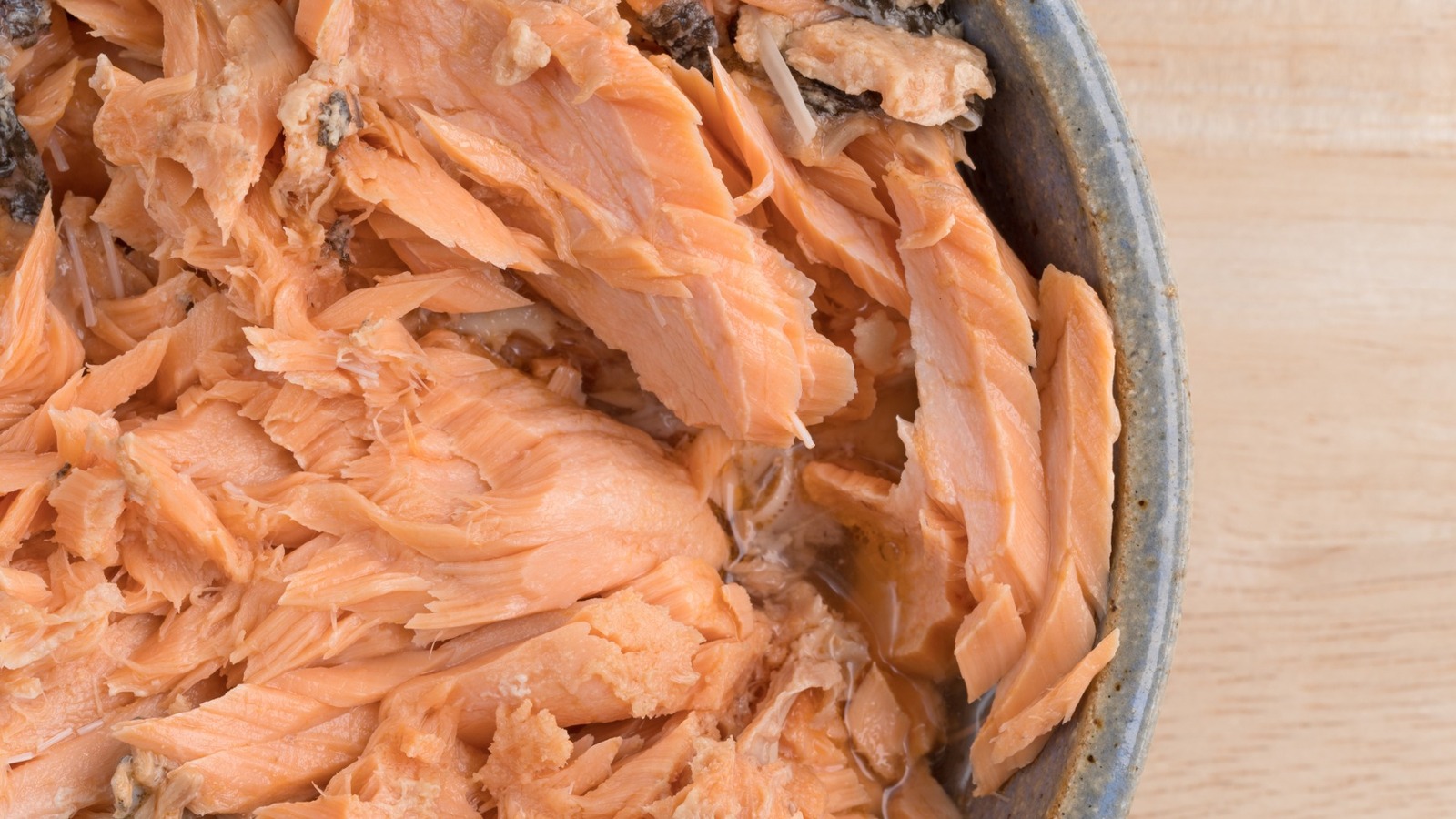Does Canned Salmon Have Bones? Here’s Why and What to Do About Them
Canned salmon is a nutritious and affordable staple in many households. Whether it’s hearty pink salmon or rich red sockeye salmon this canned fish provides a wealth of protein, omega-3s and other vital nutrients. However, many canned salmon varieties contain small soft, edible fish bones that some find unappealing.
So why does canned salmon have bones? Should you eat or remove them? Here’s everything you need to know about the bony truth of canned salmon,
Why Canned Salmon Contains Bones
Canned salmon frequently contains bones due to the anatomy of salmon and how it’s processed:
-
Salmon contains many small “pin bones” embedded in the flesh that help provide structural support. These bones are difficult to fully remove when filleting.
-
Removing all the pin bones is labor intensive, so leaving them in reduces production costs for canned salmon. This helps keep prices affordable.
-
Regulations in many countries allow bones in canned fish if properly labeled and safe. Bones are considered safe if soft and fully cooked.
-
Bones add texture, flavor and nutrients like calcium. So manufacturers purposefully leave them in rather than de-bone salmon completely before canning.
Are Bones in Canned Salmon Safe to Eat?
The bones in commercially canned salmon are safe to consume for most people. Here’s why:
-
Canning cooks the salmon at high heat, softening bones and making them digestible.
-
The US FDA confirms bones in properly canned fish are safe if not sharp or dangerous.
-
Cooking also kills any parasites or bacteria potentially concerning with raw fish.
-
Eating bones provides nutritional benefits like calcium, phosphorus and collagen.
However, there are some minor risks to consider:
-
Bones may pose a choking hazard, especially for young children and older adults.
-
Dental damage is possible if biting into larger bones.
-
Rarely, bones could cause an intestinal blockage if consuming a large quantity.
Overall though, bones in canned salmon present minimal safety concerns for most healthy adults and are considered benign. Just take care when eating to reduce any choking or dental risk.
Do Bones in Canned Salmon Have Nutritional Value?
While small and soft, the bones in canned salmon are nutritionally valuable, providing:
-
Calcium – Bones are rich in this key mineral for bone health. Canned salmon contains more calcium than fresh.
-
Phosphorus – Supports bone mineralization and cell repair.
-
Collagen – Bone collagen promotes skin, hair, nail, joint and gut health.
-
Improved Nutrient Absorption – Studies show calcium is better absorbed from bones during digestion.
So rather than just a nuisance, experts recommend consuming the bones for added nutrition, especially calcium. This makes canned salmon an excellent choice for boosting nutrient intake from seafood.
How to Remove Bones from Canned Salmon
If you find bones unappealing, they can be removed from canned salmon:
-
Drain liquid, then remove visible bones with fingers or fork. Rinse to find remaining bones.
-
Mash bones into salmon flesh with a fork until broken down and undetectable.
-
Puree in a blender or food processor to liquefy bones. Strain if desired.
-
Purchase boneless, skinless canned salmon varieties. More expensive but no bones to remove.
-
Use fresh or frozen salmon fillets and cook at home to control bone presence.
-
Crumble soft bones with fingers or fork back into the salmon for added nutrition if tolerable.
Removing bones takes more effort and reduces some nutritional value but provides a smoother, bone-free texture. Fortunately, boneless canned options are also available for convenience.
Tips for Enjoying Canned Salmon with Bones
If choosing to eat bones, keep these tips in mind:
-
Mash or crumble soft bones thoroughly into the salmon flesh before eating.
-
Slowly chew canned salmon well to avoid choking on bones. Don’t swallow large pieces whole.
-
Closely supervise children when eating to prevent choking.
-
Avoid excessive consumption if concerned about intestinal blockage. Moderation is key.
-
Mix into recipes like salmon patties, where bones become undetectable.
-
Add lemon, herbs and spices to complement flavor if bones seem unpleasant.
With caution, bones can be consumed safely, even beneficially. But removing or avoiding them is fine too. Choose what best suits your preferences and diet.
The Bottom Line
Bones are commonplace in canned salmon for several reasons – fish anatomy, processing methods, regulations, nutrition and cost. While unusual in modern cuisine, they present minimal safety concerns if canned properly. Bones even provide nutritional perks. However, you can remove or avoid them if undesirable. In the end, make the choice that best suits your tastes and nutrition needs. Just be aware that “bonus bones” are nothing to worry about when opening a trusty can of salmon.

The Untold Truth Of Canned Salmon
FAQ
FAQ
Does canned salmon usually have bones?
Thanks to their flexibility, pin bones are no problem to eat when enjoying canned salmon and provide essential nutrients like iron and calcium. While firmer pin bones are often removed from fresh salmon, the technique for canning salmon means that they can be eaten without a laborious deboning process.
Do they make canned salmon without bones?
Wild Planet Wild Sockeye Salmon, Skinless and Boneless, Sea Salt, Tinned Fish, Canned Salmon, Sustainably Wild-Caught, Non-GMO, Kosher, Gluten Free, Keto and Paleo, 6 Ounce Single Unit/Can.
How do you get the bones out of canned salmon?
Bones in canned salmon are completely normal. You can crush them up with a fork and they completely disintegrate into the meat, since they are not really bone (very lightweight cartilage, very brittle), or you can pick them out.
Does canned salmon come boneless?
Premium Wild Alaska Salmon.
One of our premium canned salmon brands, Black Top is sure to add flavor, texture, and value to a number of entrees. While skinless/boneless versions of this product are available, this product is extremely high in calcium for those who enjoy the added texture of the “traditional” style!
